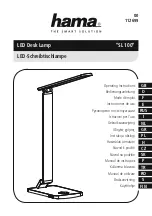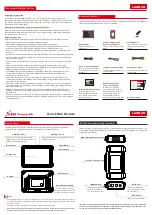
PAGE 72 OF 126
NIGHT SCAN VERTICAL, VERTICAL COMPLETE, AND VERTICAL HDT
OPERATING INSTRUCTIONS
TP-4836201-H
MAY 2021
6.8 Stowing the Mast
The "stowed" position is also called the "nested" position. The stowed position is the position of
the mast when it is fully lowered and firmly seated in the saddle. The mast is considered stowed
when the Mast Stowed Switch (lower magnetic switch) is closed and the mast powers-off.
When the mast lowers and comes to the upper magnetic switch, the RCP begins to Auto Stow
®
.
When the lower magnetic switch is reached, the system is stowed and shuts down.
It is the responsibility of the customer to properly secure the payload for vehicle travel and ensure
contact is made with the saddle.
The mast can be stowed by using:
• Auto Stow®
• “Mast Down”
• Emergency Stow With Power
The best method is to stow the mast with the Auto Stow
®
feature. It does not require the operator
to stop the mast exactly in the saddle. The mast can be auto stowed from any position, including
partially extended or fully extended.
If the mast loses power, it will lower.
6.8.1
Using the Auto Stow® Feature
To use the Auto Stow® feature:
1. Press "Mast Down" twice quickly in successive depressions (two depressions within ½
second). The mast will pan and tilt the RCP to the home position, lower the mast (if not
already there) and turn off lights. This automatic sequence can be aborted by pushing any of
the buttons on the controller at any point during the Auto Stow®. If a button is pressed, the
mast will not stow by itself, and will await further operator input.
2. Visually inspect that the mast is properly stowed and powered down. Ensure that the payload
will not bounce as the vehicle drives down the road.
3. Store remote controls if used so they will not be damaged during transportation.
Summary of Contents for Night Scan Vertical 4.3-15
Page 2: ......
















































